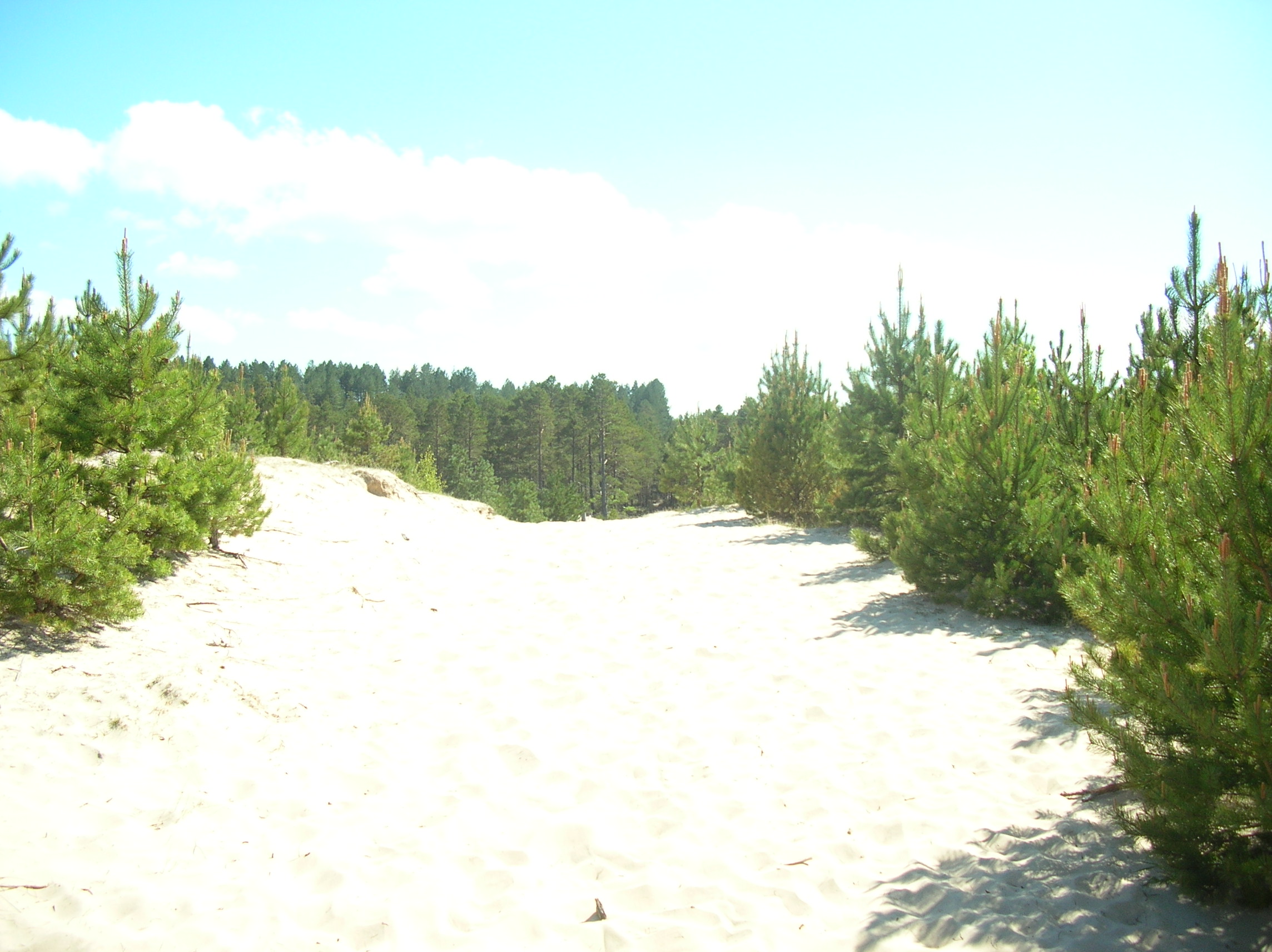Scotland’s Sandy Pompeii May 16, 2011
Author: Beach Combing | in : Modern , trackbackThe Barony of Culbin was, in the early modern period, one of the richest agricultural lands in north-western Scotland. Up to sixteen farms worked this coastal territory of between three and four thousand acres under the rule of the Kinnairds. In the late seventeenth century, the rental of the estate was 2,720 Scots pounds – a small fortune at that time, 640 bolls of wheat, 640 bolls of bere, 640 bolls of oats and 640 bolls of oatmeal: this was the ‘girnel’ or granary of Moray.
There was a chapel. There was a mansion house. There was even a dove cott. There was a smithy. There was a world here.
Then one fine evening in 1694 the sands blew and covered the lot.
This at least is what the legend-fed folk of Moray remember, folk who incidentally blame the local laird for bringing the sands upon the township by playing cards with the devil.
Scottish scholars who have interested themselves suspect that things may not have been so apocalyptic. It is more likely, they suggest, that the sands came more in a number of storms over half a century – there had also been a great storm in 1676 – encouraged by coastal erosion and the uprooting of shrubs that had held the dunes in place. But 1694 was ‘the big one’ and after that the territory was for ever abandoned, bar some tame attempts by to reclaim the dunes by planting pines there.
But, if Culbin was stolen from humanity, from time to time the hidden Barony returns. After one particularly grim storm in the eighteenth-century the chimney of the mansion house appeared: a visitor is said to have shouted down and run at the sound of his ghostly echoing voice.
At another time part of the lord’s orchard appeared, walls of houses, the dove cott no less…
Then the winds blew once more and these visitors to our world shrank back into the sands.
Beachcombing’s favourite anecdote – part empiricism and part Celtic myth – concerns an apple tree:
‘an old man, who died about fifty-five years ago [c. 1900] at the age of eighty, was wont to relate that, in his youth, he had seen the branch of an apple-tree projecting from a sand-dune. As long as the branch lay exposed to view, he inspected it from time to time. In meet season it budded and blossomed; and in the autumn it bore a quantity of apples that the old man actually gathered. They were said to have been of fair size, and of a delicious flavour.’
One Scottish historian visited the site before the Second World War and gives some sense of the protean energy of the dunes and the power of the angry sands (17).
‘Naught but the brief, spasmodic, and almost inaudible whisperings of loose sand everywhere around me proved the existence of any air movement at all; and the delicacy of the designs left upon the face of this desert by erratic winds and their eddyings was such as one might have expected from the pen of a magician artists. The loneliness was without even the whirr of insects to relieve it. Here, in truth, was solitude absolute…. I shall always remember the panic that on this occasion took hold of me when, at nightfall, I lost my way by the edge of one of its ‘winter’ lochs, deep in the heart of a Corsican pine plantation. When the wind suddenly rose, and the sand started to beat overhead in clouds, I thought my last moment had arrived. I was seized with something of the dread of being buried alive that frequently visited one as great shells burst on the plains of Flanders. Had I been stranded in the heart of the Sahara itself, I could not have felt more effectively cut off from the rest of the world. Even when I succeeded in emerging, fear that I might perish was still with me. I found myself alone, and in the midst of unutterable desolation and sterility.’
Beachcombing wonders if there are any other sandy Pompeii’s out there. drbeachcombing AT yahoo DOT com
***
19 May 2010: Invisible writes in with another Scottish Pompeii, arguably the original one, Skara Brae ‘called by Jacquetta Hawkes ‘the Scottish Pompeii’ because of the excellent state of preservation and artifacts indicating the occupants left in a hurry. Some archaeologists think it was abandoned in haste as the result of a huge sandstorm; others suggest that gradual climate change was the culprit.’ Then there is BAY with a few more non-Scottish candidates: ‘I presume you know about Leptis Magna. (I like the photo of the pillar sticking out of the sand, down the page on the right hand side) It’s in Libya and much of it is under sand. I’ve never been there, but would like to go…though, of course, it’s in Libya… I did go to Baelo Claudia a few years ago, in southern Spain. Like many coastal outposts of the Roman Empire, it fell into disrepair & got covered in sand. And I always liked this web site.’ Thanks Invisible and thanks BAY!!



